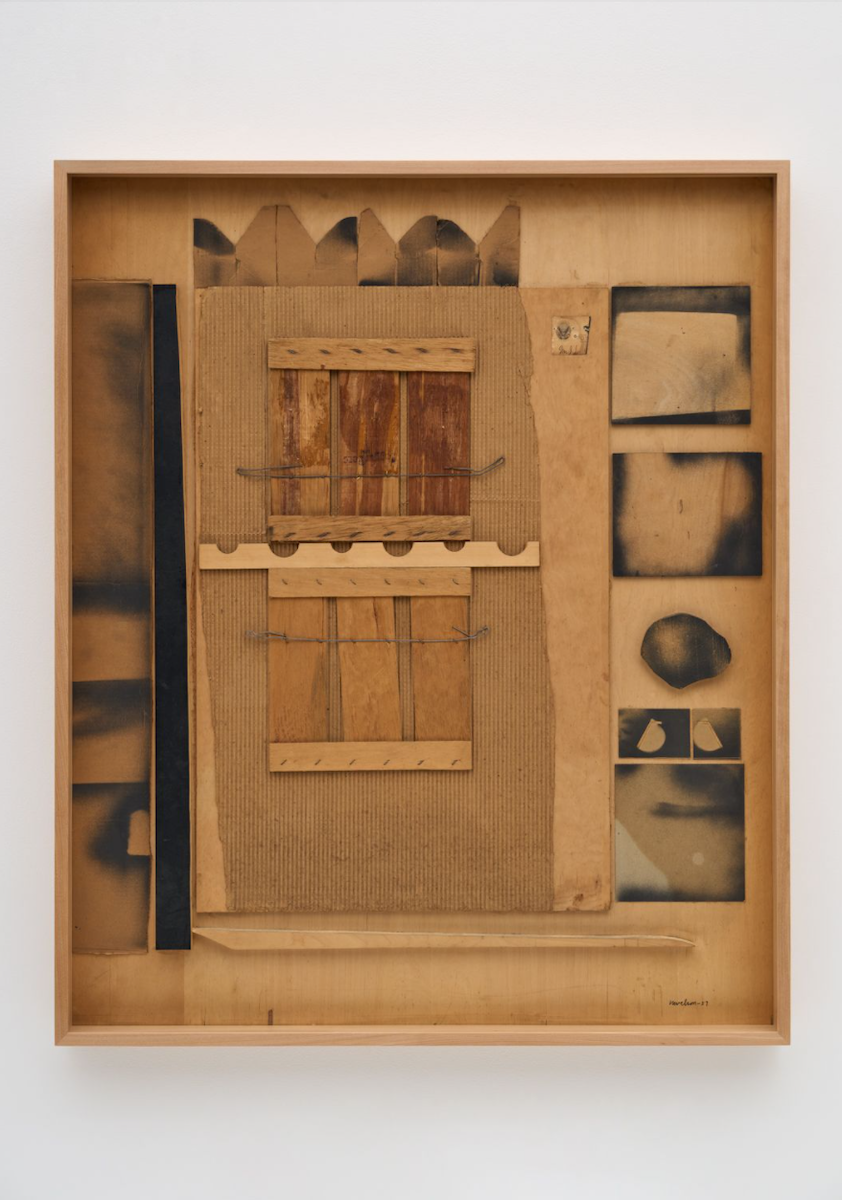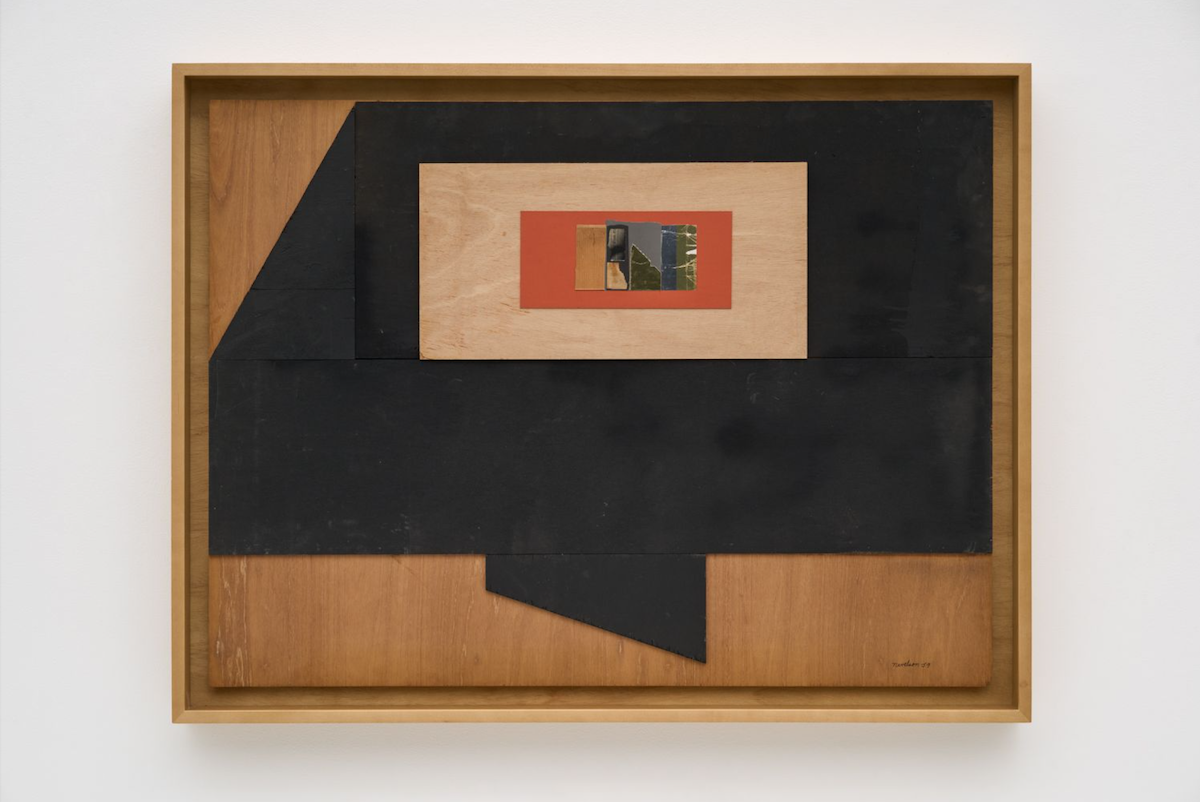Fragments of paper, cardboard, wire and foil have all been carefully orchestrated into a space that seems to float seamlessly and coalesce into a compelling quasi-geometric composition in “Collages 1957–1982” by Louise Nevelson. On closer inspection, it becomes clear how much the detritus that was collected from the artist’s environment was carefully smoothed, flattened, cut, torn and arranged—as though it was the most precious material in the world. The clear yet complex set of correlated relationships between the smaller forms and the larger bounding areas radiate a sense of harmony that belies the humble nature of the raw material being deployed. Predominantly monochromatic with some high contrast between white-and-black masses, there are occasional eruptions of color: a bright orange here or a light blue there, but there’s a sense throughout that these compositions are meant to be very even tempered.
While Nevelson’s sculptural works comprise large arrays of decontextualized objects and parts of objects arranged in patterns that are then evenly coded in one color, these smaller studies demonstrate how the artist works her aesthetic prowess on a less massive scale. There is still the kind of somberness to these collages but it is scaled differently so the concern that is worked out on each individual element, be it a fragment from a cigarette pack or part of a wooden crate, is highlighted.

Louise Nevelson, Untitled, 1957 © 2021 Estate of Louise Nevelson / Artists Rights Society (ARS), New York
In Untitled (1957) flanking either side of the central corrugated cardboard panel on which wood panels are wired are smaller scraps of flat cardboard on which rough geometric shapes have been created through spray painting, leaving the forms as negative space defined by the surrounding black paint. Above the central panel the artist has positioned several semi-circular arches that appear almost crown-like. There are tears and regular cuts of these different parts throughout, but it all looks to have been shaped by pushing a determined composition.
The pleasure evinced in viewing these works is determined by both the quiet and controlled orchestration of space and also by entering a very subtle yet decisive imaginative dimension in which the viewer is invited into a space without it ever having to add up to anything other than its exploration.
Louise Nevelson: Collages 1957 – 1982
Kayne Griffin
Through Oct. 30


